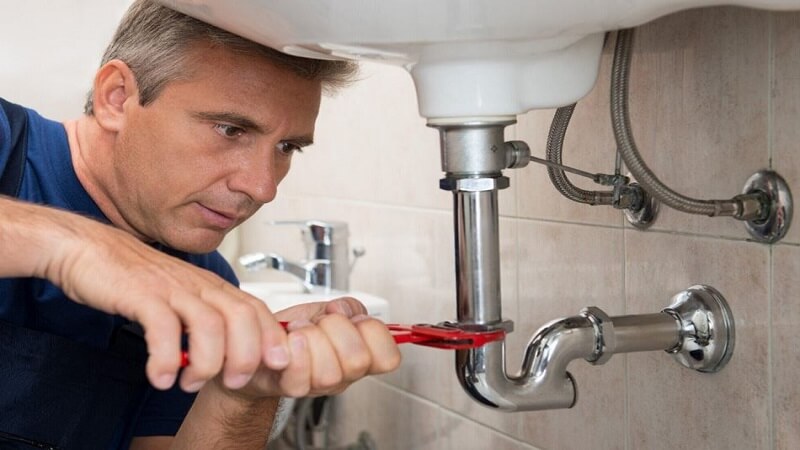Every homeowner faces plumbing problems now and then. Things like dripping faucets or blocked drains might seem small, but they can cause big headaches and expensive repairs if ignored. Knowing the common plumbing issues and how to fix them can save you time and money.
In this guide, you’ll learn about usual plumbing troubles and easy ways to handle them, so your home’s plumbing stays working smoothly. Let’s dive in!
Leaky Faucets
One of the most common household plumbing issues is a leaky faucet. Not only does it waste water, but it can also increase your water bill significantly.
The main culprits behind a leaky faucet are worn-out washers or O-rings. These components can wear down over time due to regular use. To fix a leaky faucet, you typically need to follow these steps:
- Turn off water supply.
- Remove handle and nut.
- Replace washers or O-rings.
- Reassemble faucet, turn on.
With a few simple tools and a little time, you can restore your faucet to perfect working order and save on wasted water.
Clogged Drains
Clogged drains can lead to frustrating backups and odors in your home. Kitchen sinks and bathroom drains are often the most affected, typically due to the accumulation of food particles, grease, hair, and soap scum.
However, remedies exist to tackle this common plumbing problem. If you encounter a clogged drain, try the following methods:
Boiling Water
Pour boiling water slowly down the drain. This can help clear small clogs from grease or soap. It’s an easy and natural first step.
Drain Snake
If boiling water doesn’t fix the clog, try a drain snake. It’s a long tool that pulls out hair and stubborn debris. This can help clear blockages deep in the drain.
Plunger
Use a plunger for sinks or toilets with clogs. The plunger creates pressure that pushes the blockage away.
It’s a quick way to get things flowing again. If these methods don’t work, it might be time to call a professional drain cleaning company to safely and effectively clear the blockage.
Running Toilets
A running toilet can waste an astonishing amount of water-up to 200 gallons per day! This occurs when the flapper valve fails to seal properly or when the fill valve has issues.
The constant sound of water running can also be annoying. To diagnose and address a running toilet:
- Check flapper for damage.
- Inspect fill valve operation.
- Adjust float if flowing.
So, tackling a running toilet is often straightforward and can lead to significant water savings.
Low Water Pressure
Experiencing low water pressure can make everyday tasks frustrating. Common causes of low water pressure can include buildup of mineral deposits in pipes, leaks, or issues with the municipal water supply. To address low water pressure:
Check for Leaks
Look closely around your faucets and any exposed pipes for signs of leaks. Even small drips can waste water and cause damage over time. Catching leaks early can save you money on repairs later.
Clean Aerators and Showerheads
Mineral buildup can block water flow in your aerators and showerheads. Remove these parts and soak them in vinegar to clean off any deposits. This helps keep your water pressure strong and your fixtures working well.
Call a Plumber When Needed
Sometimes plumbing problems are too tricky to fix on your own. If you notice persistent issues or suspect a bigger problem, it’s smart to hire a professional plumber. They have the tools and knowledge to keep your system running smoothly.
Water Heater Issues
Water heater problems can disrupt your everyday routine, especially if you suddenly find yourself without hot water. Common issues often include a lack of hot water, strange noises, or leaks. To troubleshoot issues with your water heater, consider the following:
Check Thermostat Settings
Make sure your water heater’s thermostat is set to the right temperature. Too high or too low can affect how well your water heats. Adjusting it properly can save energy and prevent problems.
Inspect for Leaks
Look carefully around the water heater tank for any leaks or moisture. Also, check that all connections and fittings are tight and secure. Fixing leaks early helps avoid bigger damage and water waste.
Flush the Tank Annually
Sediment can build up inside your water heater tank over time. Flushing it out once a year helps keep the heater working efficiently. This simple step can extend the life of your water heater and improve performance.
Hidden Leaks
Hidden leaks can be particularly problematic, often going unnoticed until they cause significant damage. These leaks may occur in walls, ceilings, or underground and can lead to mold growth, structural damage, and increased water bills. To detect hidden leaks, keep an eye out for:
- Unexpected rise in bills.
- Water stains on walls.
- Musty smell means mold.
If you suspect a hidden leak, it’s best to call a plumbing professional who can perform leak detection services to safeguard your home.
Prevention Tips
Preventing plumbing issues is often easier than remedying them. Here are some effective tips to maintain your household plumbing:
Clean Drains Regularly
Keeping your drains clean helps stop clogs before they start. You can use natural cleaners or simply flush them with hot water. Regular care saves you from costly plumbing problems down the line.
Inspect and Replace Worn Parts
Check your faucets, valves, and other fixtures for signs of wear or damage. Replacing worn parts early can prevent leaks and improve how your plumbing works. It’s easier to fix small issues than wait for a big problem.
Schedule Professional Inspections
Having a plumber inspect your system now and then is a smart idea. Professionals can spot hidden problems that you might miss. Regular check-ups keep your plumbing safe and efficient.
Watch What You Drain or Flush
Be careful about what goes down your drains or toilets. Avoid pouring grease, coffee grounds, or using too much toilet paper. These items can cause blockages and damage your plumbing system.
Discover Common Household Plumbing Problems
With a little knowledge and maintenance, many common household plumbing problems can be effectively managed or avoided. Understanding how to fix issues such as leaky faucets, clogged drains, and low water pressure puts you in control of your home’s plumbing.
Should complications arise beyond your expertise, don’t hesitate to reach out to a skilled professional. Their expertise can ensure that your household plumbing remains in optimal condition.
Is this article helpful? Keep reading our blog for more.

